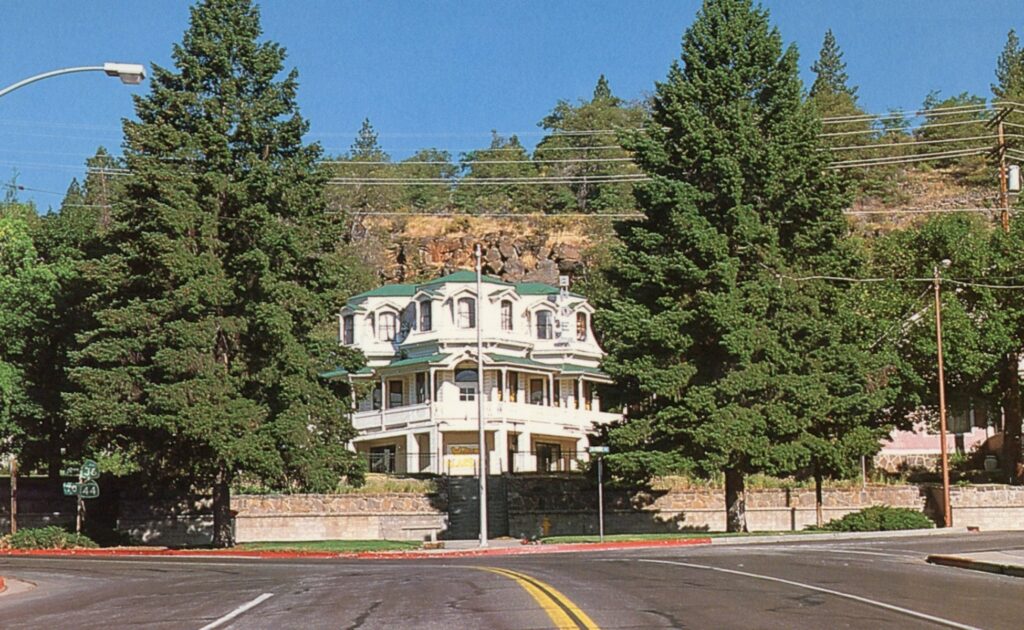
Personally, I have special affinity for architecture, but my honest opinion I disagree with this newspaper article as follows.
In July 1908, it was announced that Susanville pioneer merchant David Knoch hired Enhorning & Harrison to construct a house at 100 North Roop Street. The Lassen Advocate noted: “The Knoch residence on the corner of Roop and Nevada streets is a one-story edifice, 32×62 feet and will contain five rooms, bath, closet and pantry. It will be bungalow style, with a round tower on the corner. The building be wired. throughout, and strictly up-to-date in all its furnishings and appliances.”

First and foremost, bungalow style homes do not have a semi-circular porch. Second, I knew owners Lyle “Dan” & Nadene Wemple and frequently visited them during the late 1970s. The interior of the house basically remained the same as it was built–bland. There were was no wood work features and/or cabinetry associated with a bungalow.
On a side note Enhorning & Harrison kept busy, besides Knoch residence, they built the Borrette next door in that same year. In 1909 they constructed houses of 120 and 130 North Roop Street.
Subscribe














 The Monticola Club refers to it as the Triangle and are somewhat the unofficial overseer of it. In 1958, The Garden Section of the Club began planting flowers there. In 2023, the Monticola Club planted daffodils. In 1987, the Monticola Club through the hard work of Patty Davies put together a history of the various activities of that organization. The following is an excerpt from that booklet: “The Triangle. The 50 foot steel flagpole erected in the ‘triangle’ at the west end of town was purchased by the club in 1967. The club also ordered a flag that had flown over the U.S. Capitol. Since then, the club has paid the Lions Club $10 annually to raise the flag on major holidays. Several members donated six junipers for the area and planted lawn and petunias. Almost every year since, the club has been responsible for the beautification of that area.”
The Monticola Club refers to it as the Triangle and are somewhat the unofficial overseer of it. In 1958, The Garden Section of the Club began planting flowers there. In 2023, the Monticola Club planted daffodils. In 1987, the Monticola Club through the hard work of Patty Davies put together a history of the various activities of that organization. The following is an excerpt from that booklet: “The Triangle. The 50 foot steel flagpole erected in the ‘triangle’ at the west end of town was purchased by the club in 1967. The club also ordered a flag that had flown over the U.S. Capitol. Since then, the club has paid the Lions Club $10 annually to raise the flag on major holidays. Several members donated six junipers for the area and planted lawn and petunias. Almost every year since, the club has been responsible for the beautification of that area.”